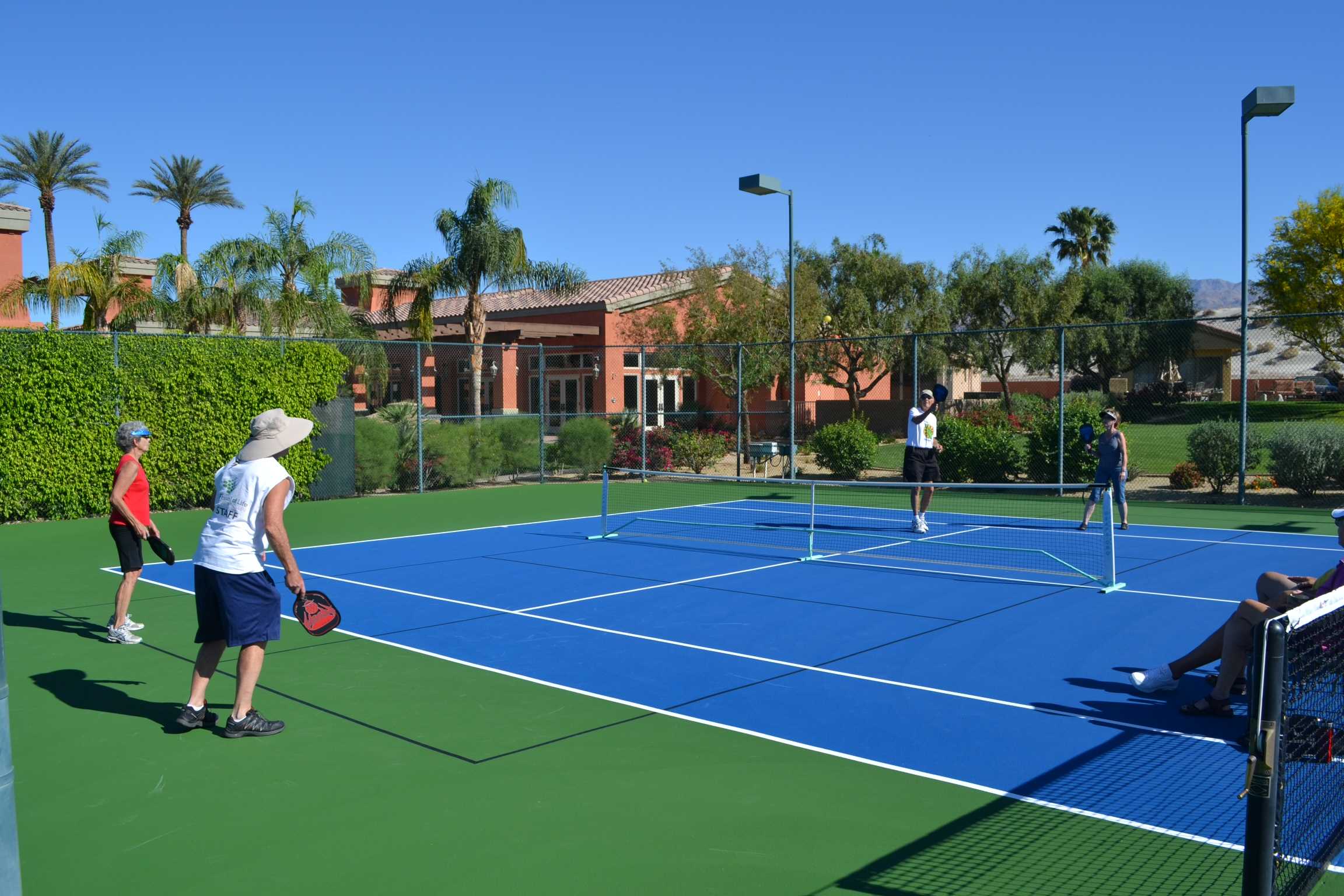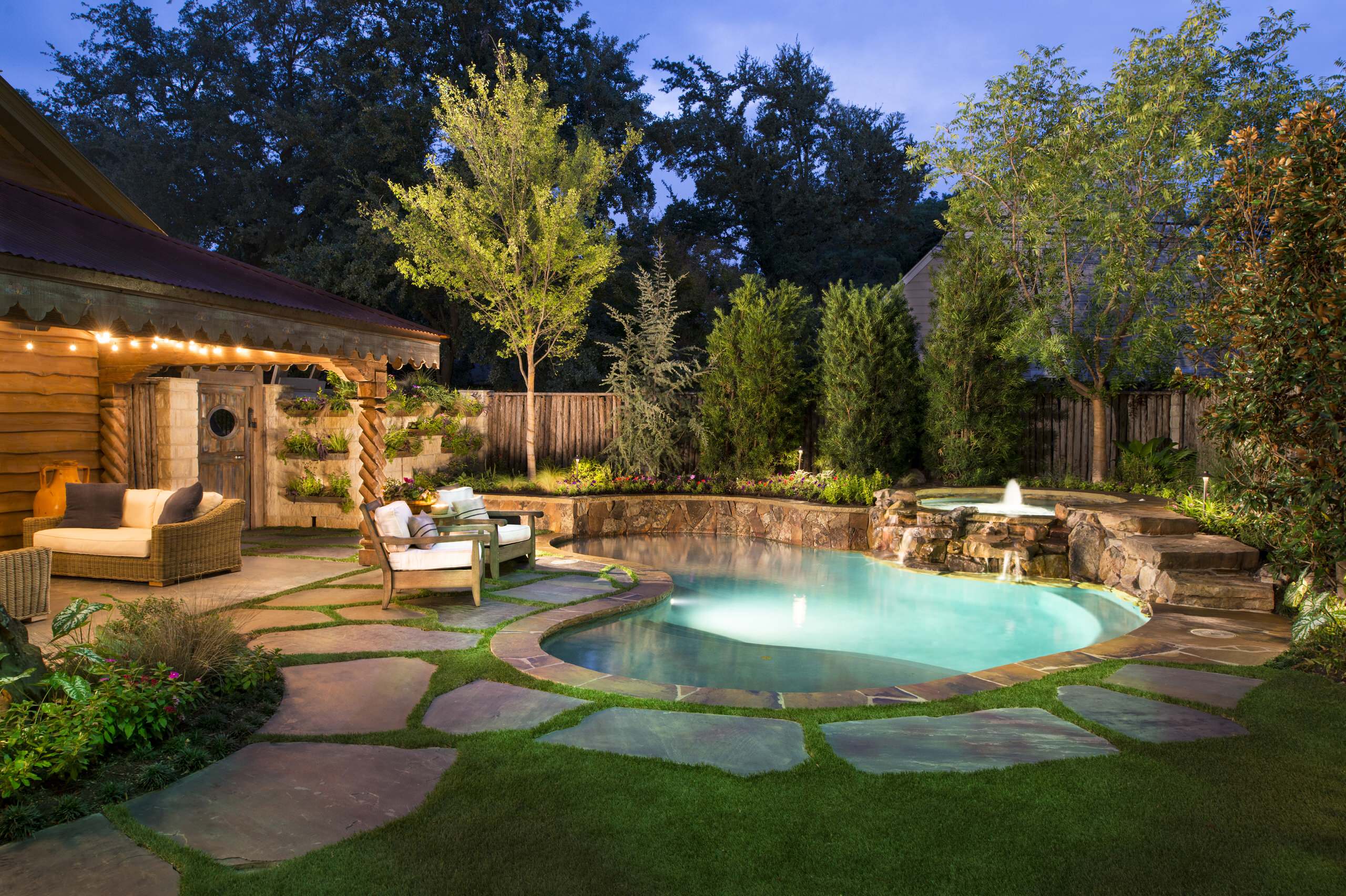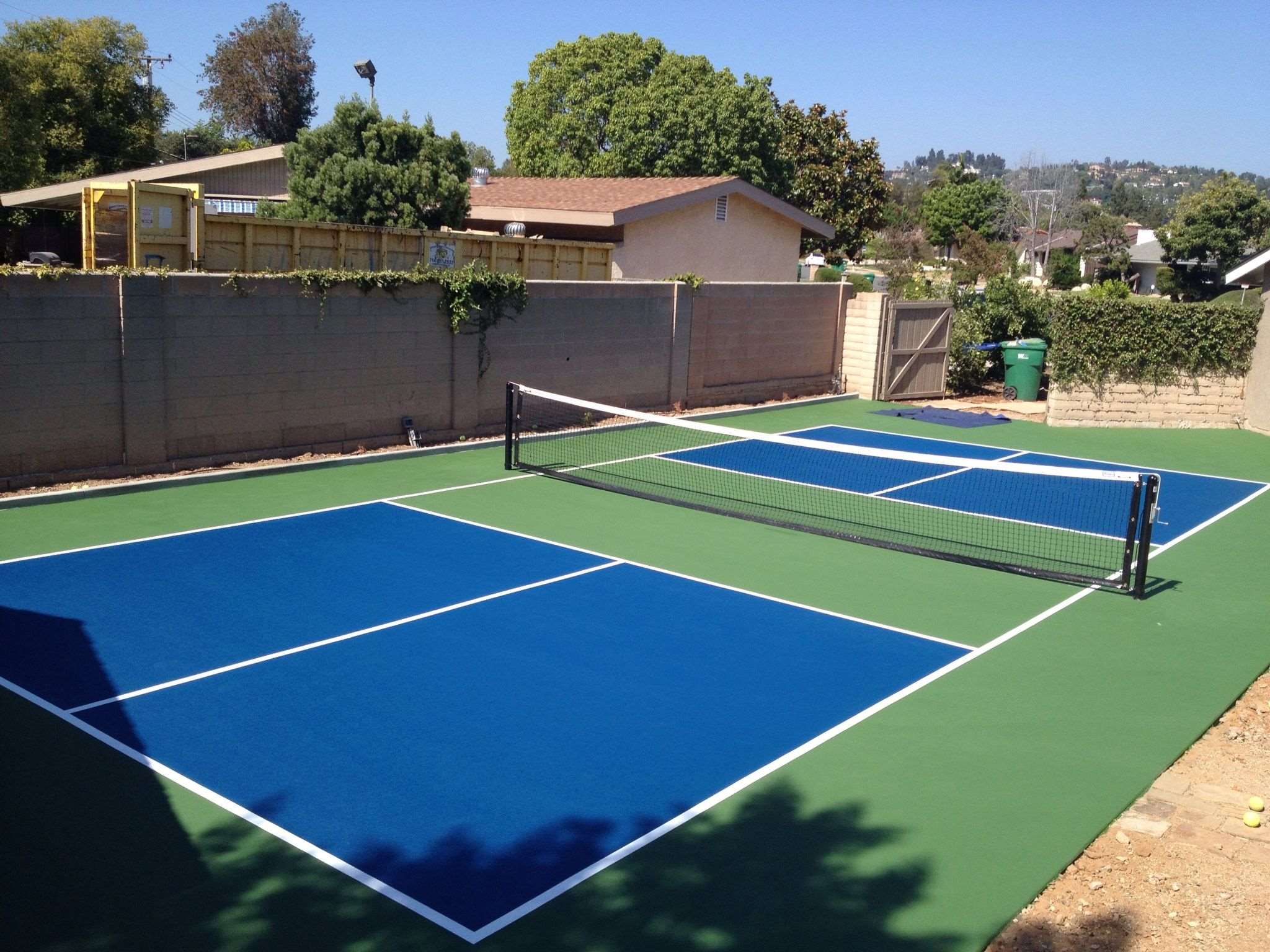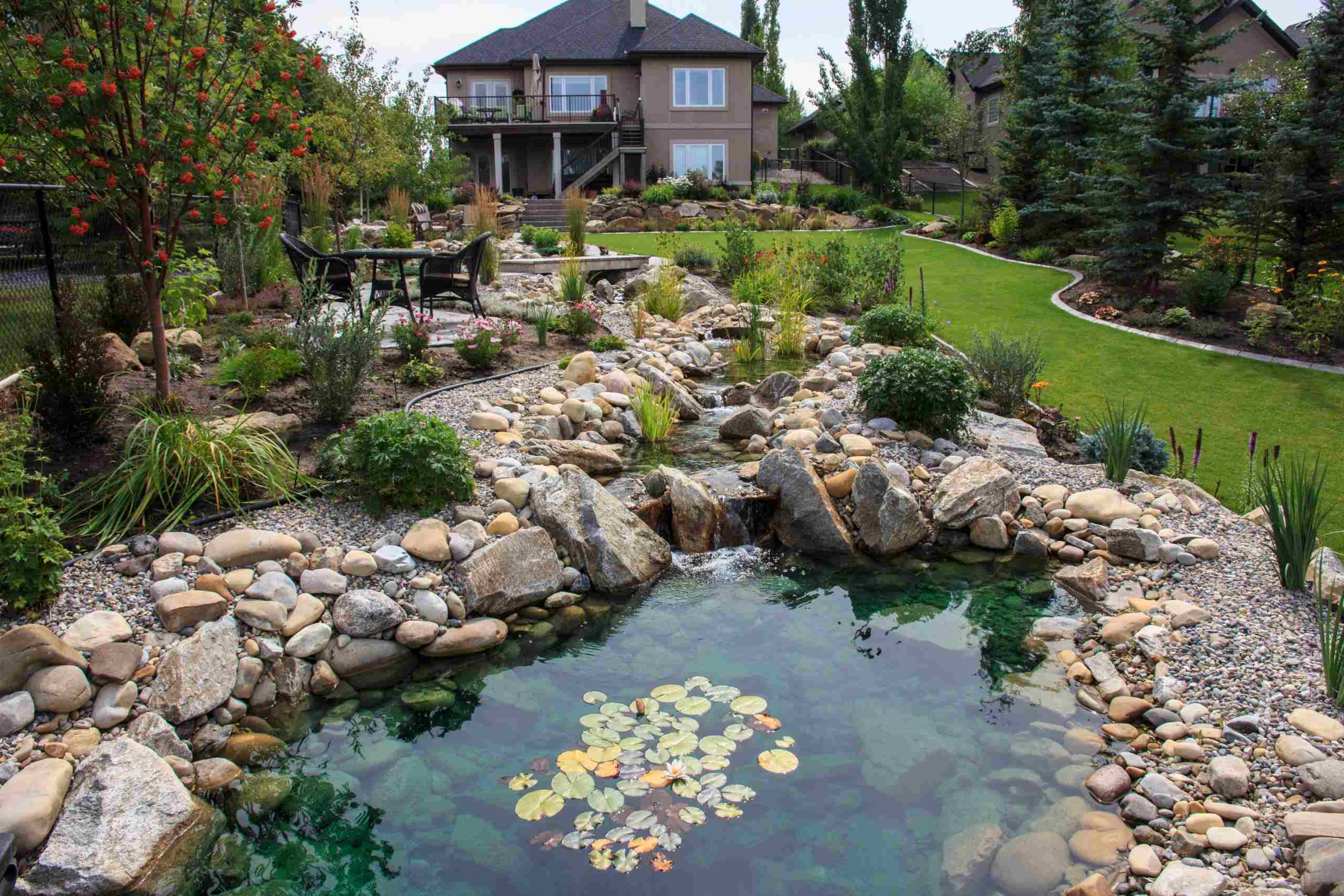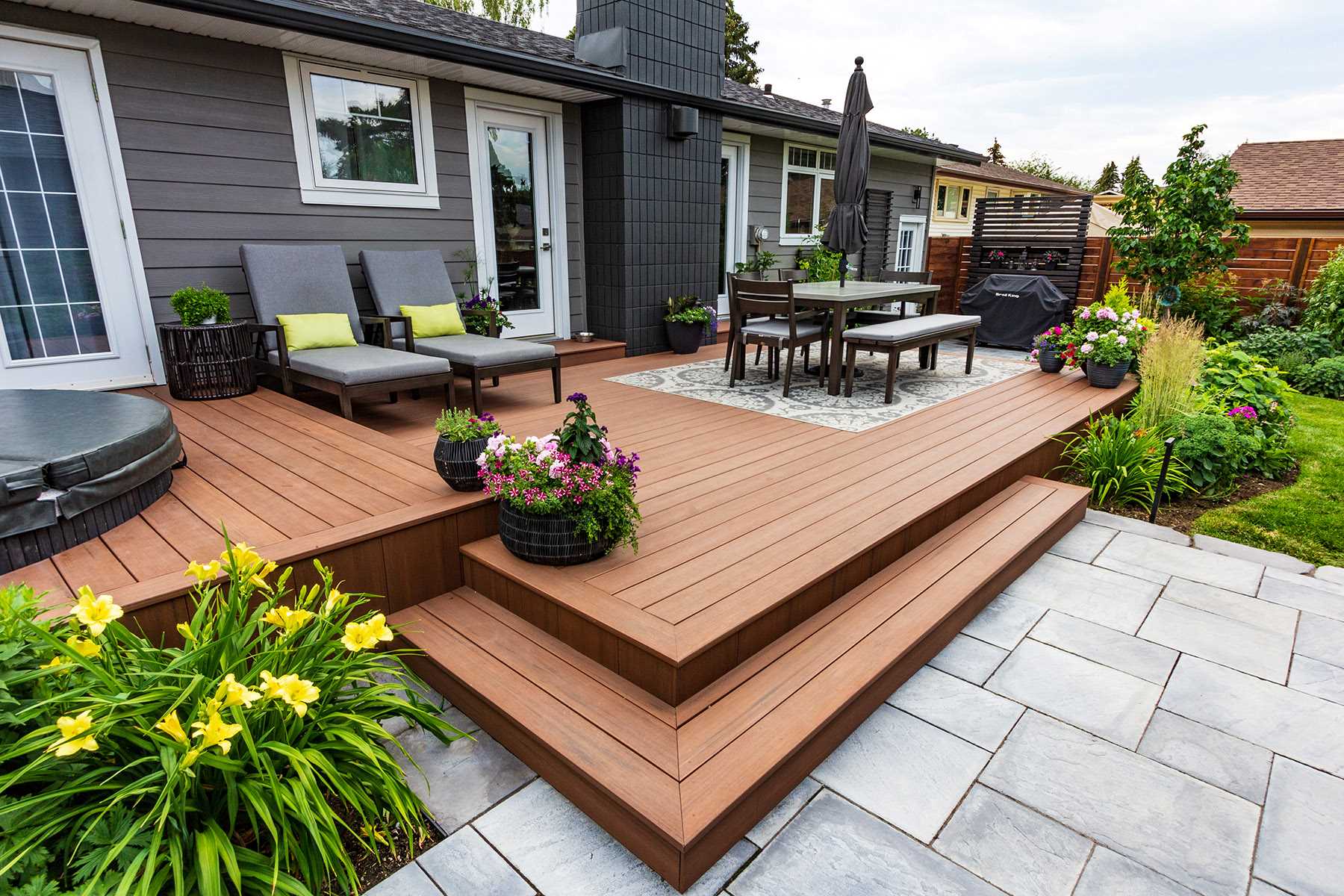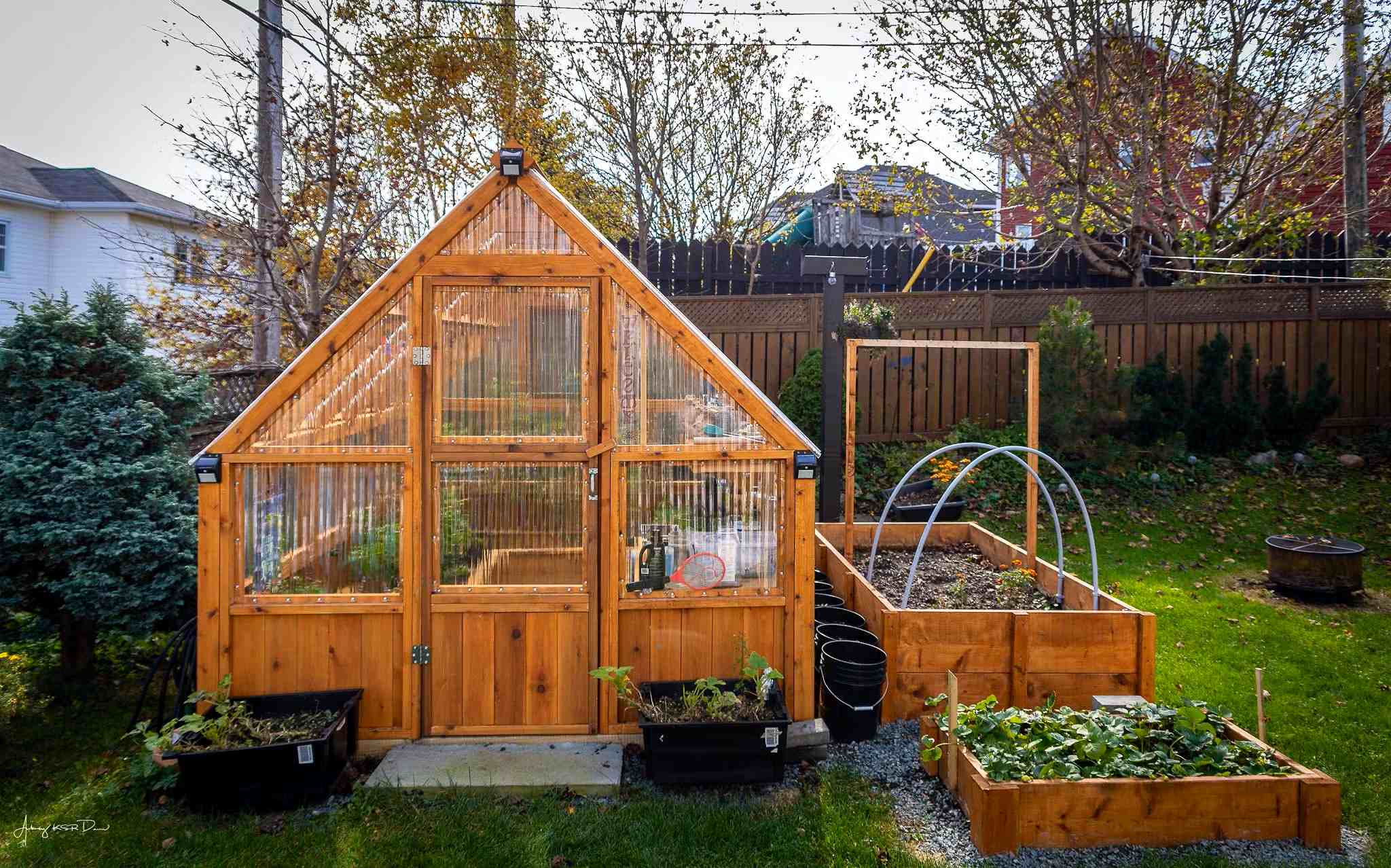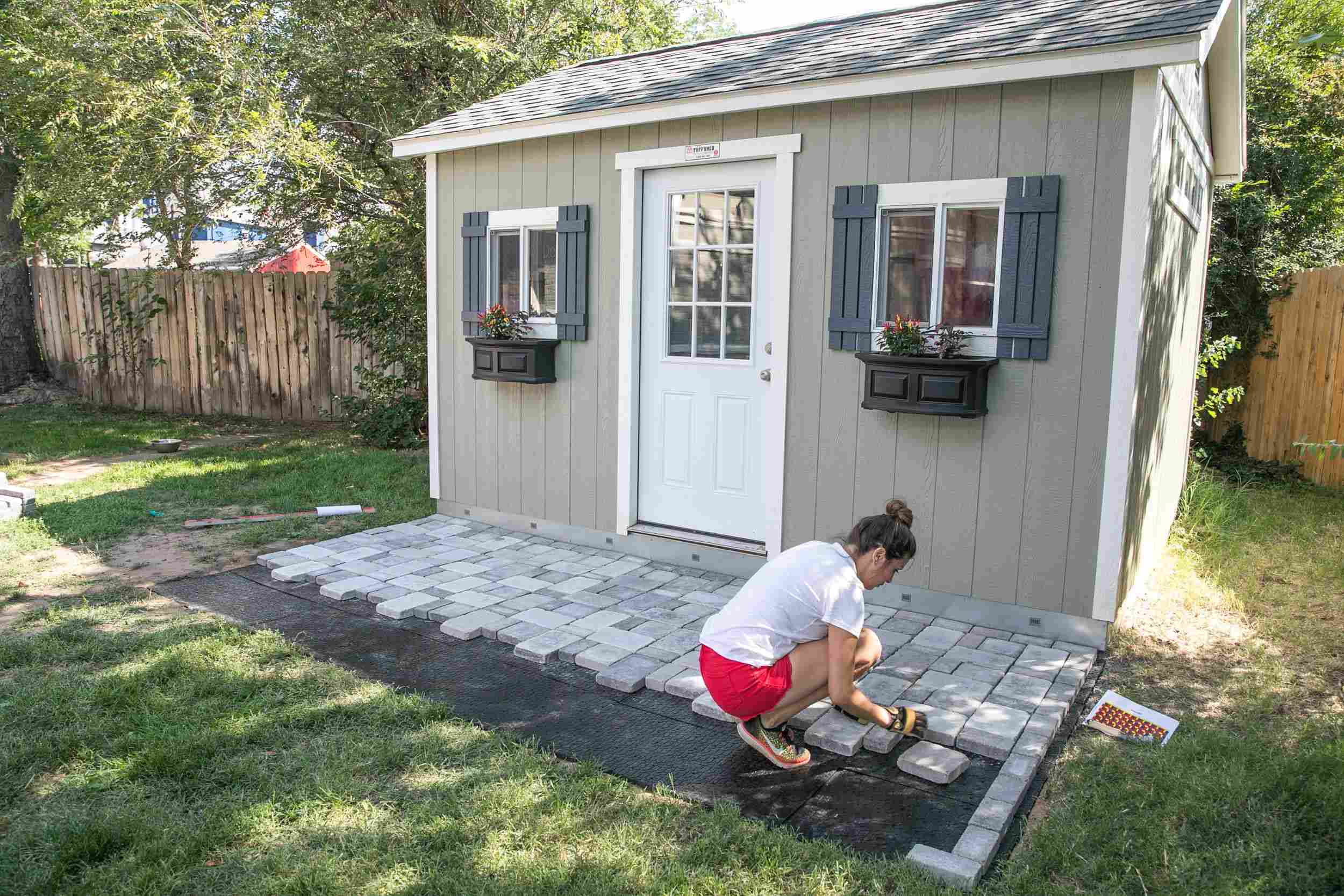Home>Gardening Techniques>DIY Projects>How To Build A Roller Coaster In Your Backyard
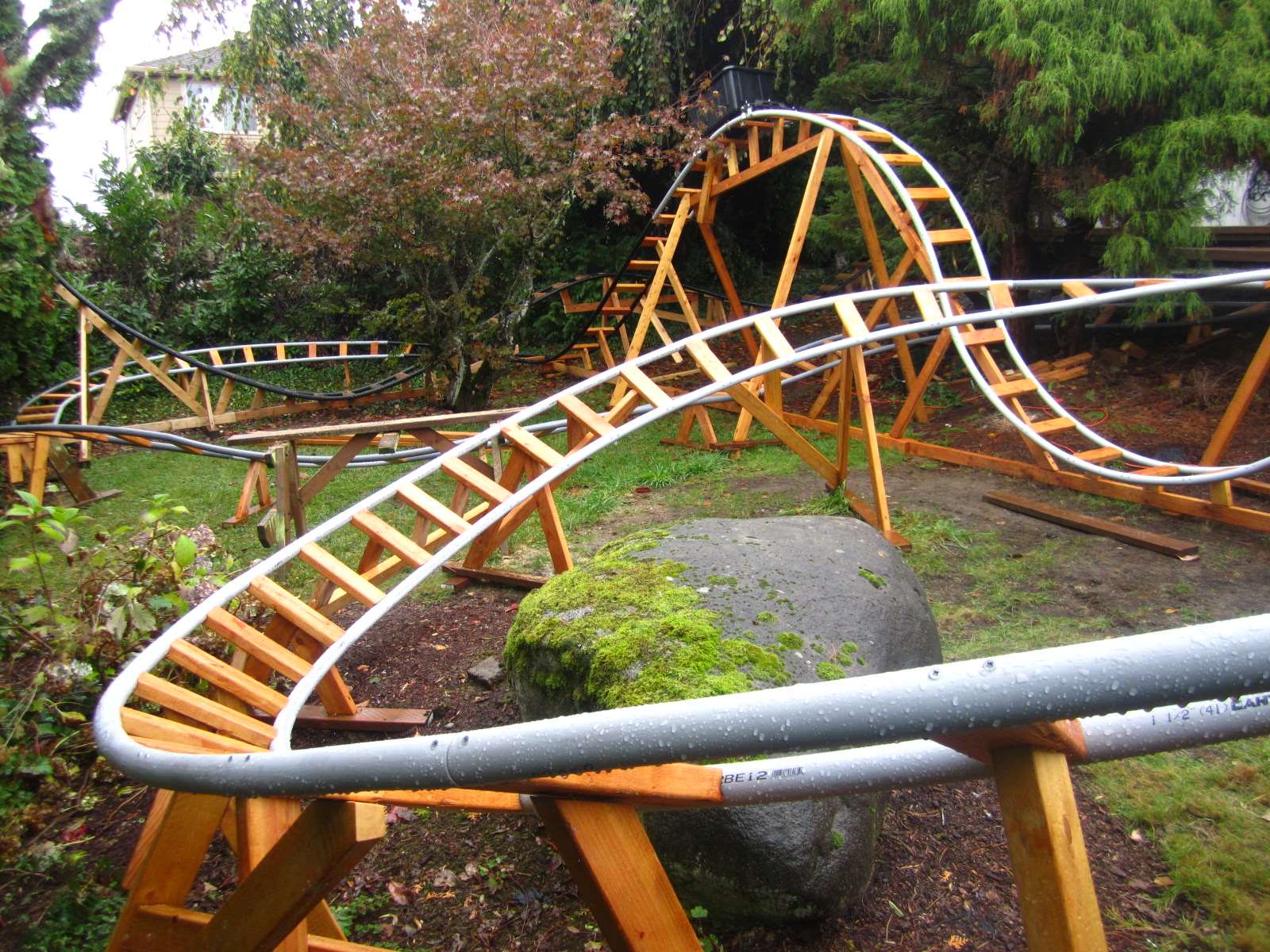

DIY Projects
How To Build A Roller Coaster In Your Backyard
Published: August 5, 2023
Learn how to build your own roller coaster in your backyard with this DIY project. Create unforgettable memories with family and friends while enjoying the thrill and excitement of your very own amusement ride.
(Many of the links in this article redirect to a specific reviewed product. Your purchase of these products through affiliate links helps to generate commission for Chicagolandgardening.com, at no extra cost. Learn more)
Table of Contents
Introduction
Imagine the thrill of having your very own roller coaster right in your backyard. The adrenaline rush, the excitement, and the joy of experiencing the twists and turns can be truly exhilarating. Building a roller coaster may seem like a daunting task, but with the right planning, materials, and a bit of DIY spirit, it is possible to create your own backyard roller coaster.
Building a roller coaster in your backyard is not only a unique and exciting project, but it also provides a great opportunity for creativity and family fun. It can serve as a thrilling addition to your outdoor space, a center of attraction for parties, and a source of endless entertainment for both kids and adults.
However, before you dive headfirst into the project, it’s crucial to understand that safety should be your top priority. Roller coaster construction requires careful planning, adherence to safety guidelines, and knowledge of engineering principles. By following the proper steps and taking the necessary precautions, you can build a safe and thrilling roller coaster experience.
In this comprehensive guide, we will walk you through the step-by-step process of building a roller coaster in your backyard. From planning and safety considerations to gathering materials, designing the layout, and finally constructing the coaster, we will cover everything you need to know to successfully bring this thrilling DIY project to life.
So, if you’re ready to embark on an exciting journey of building your own backyard roller coaster, let’s dive right in and make your adrenaline-fueled dreams come true!
Planning and Safety
Before you start building your backyard roller coaster, it’s essential to spend ample time on proper planning and safety considerations. Building a roller coaster is not a task to be taken lightly, as it involves potential risks and requires a thorough understanding of engineering principles. Here are some key steps to ensure a safe and successful project:
1. Research and Education: Start by researching about roller coaster design principles and safety standards. This will help you understand the engineering behind roller coasters and enable you to make informed decisions throughout the construction process. There are various resources available online, including books and articles, that provide valuable information on roller coaster design.
2. Consult Professionals: It’s highly recommended to consult with relevant professionals, such as engineers or roller coaster designers, to ensure that your design meets safety regulations and is structurally sound. They can provide valuable insights and guidance based on their expertise and experience.
3. Obtain Permits: Check with your local authorities to determine if any permits or approvals are required for building a roller coaster in your backyard. This includes ensuring compliance with zoning regulations, height restrictions, and safety requirements. Obtaining the necessary permits will ensure that your project is legal and safe.
4. Safety Guidelines: Familiarize yourself with safety guidelines issued by organizations like the International Association of Amusement Parks and Attractions (IAAPA). These guidelines cover various aspects, such as ride clearances, restraints, and emergency procedures. Adhering to these guidelines will help create a safe roller coaster experience for riders.
5. Risk Assessment: Conduct a thorough risk assessment of your backyard and surrounding area to identify potential hazards. Account for factors like trees, nearby structures, and uneven terrain. This assessment will help you make informed decisions regarding the coaster’s layout and ensure the safety of riders and spectators.
6. Emergency Preparedness: Develop an emergency plan that includes safety measures, evacuation procedures, and communication methods. Install safety features like emergency stop buttons and ensure easy access for emergency responders.
By thoroughly planning and prioritizing safety, you can minimize risks and create a safe roller coaster experience in your backyard. Remember, safety should always be the topmost concern, and any compromises in this aspect should never be made.
Choosing the Right Location
Choosing the right location for your backyard roller coaster is a crucial step in ensuring its success. Here are some factors to consider when selecting the ideal spot:
1. Space: Assess the available space in your backyard to determine if it can accommodate a roller coaster. Consider the length, width, and height requirements of your coaster design. The area should be large enough to accommodate the track, support structure, and necessary clearance for riders and spectators.
2. Accessibility: Ensure that the location is easily accessible for construction and maintenance purposes. You may need to transport heavy materials and equipment, so having convenient entry points for delivery and assembly is important.
3. Ground Stability: Check the stability of the ground where you plan to build your roller coaster. The soil should be able to support the weight of the coaster and withstand the forces exerted during operation. Conduct soil tests or consult with a geotechnical engineer to determine if any ground stabilization measures are necessary.
4. Surrounding Environment: Consider the surroundings of your chosen location. Avoid areas with overhanging trees or structures that could interfere with the coaster’s track or pose risks during operation. Ensure that there is enough open space around the roller coaster for safety and future expansion if desired.
5. Noise and Privacy: Evaluate the potential noise impact of the roller coaster on your neighbors and consider their privacy. A roller coaster can generate noise, especially during operation, so it’s important to be considerate of those living nearby. Make sure the location allows for adequate privacy and does not excessively disturb the neighborhood.
6. Aesthetics: Take into account the overall aesthetic appeal of the location. Consider how the roller coaster will blend with your backyard landscape and if it aligns with your desired visual aesthetic. You may also want to consider the line of sight from different vantage points in your backyard to maximize enjoyment for both riders and spectators.
By carefully evaluating these factors, you can select a location that not only meets the necessary technical requirements but also enhances the overall experience of your backyard roller coaster.
Gathering Materials and Tools
Once you have finalized the location and done the necessary planning, it’s time to gather the materials and tools required for building your backyard roller coaster. Here’s a list of essential items you’ll need:
1. Steel or Aluminum Tubing: These materials are commonly used for constructing the track structure of a roller coaster. The tubing should be of high quality and suitable for outdoor use. Determine the length and diameter of the tubing based on your coaster design.
2. Support Beams: You’ll need sturdy support beams to hold up the track structure. These can be made from wood, steel, or a combination of both, depending on your design and budget. Ensure they are strong enough to withstand the weight and forces exerted by the roller coaster.
3. Fasteners and Hardware: Purchase a variety of bolts, nuts, washers, and screws to securely fasten the track and support structure. Choose materials that are durable and resistant to outdoor conditions.
4. Wheels and Bearings: Select high-quality wheels and bearings that are designed for roller coaster use. These components will ensure smooth movement along the track and reduce friction.
5. Wooden Boards: Depending on your design, you may need wooden boards for constructing the coaster’s foundation, stairs, and platform. Choose pressure-treated lumber that is weather-resistant and durable.
6. Concrete: If your roller coaster requires a concrete foundation or footings, make sure to procure the required amount of concrete mix, as well as any reinforcing materials like rebar.
7. Safety Equipment: Invest in safety equipment, such as helmets, safety harnesses, and gloves, to use during the construction process. This will help protect you and your team from potential accidents and injuries.
8. Tools: Gather a range of tools, including but not limited to a measuring tape, level, drill, saw, wrench, and hammer. Having a comprehensive set of tools will make the construction process more efficient.
It’s important to acquire high-quality materials from reputable suppliers to ensure the safety and longevity of your roller coaster. Additionally, consider renting or borrowing specialized tools if you don’t already own them to minimize costs.
By gathering the necessary materials and tools ahead of time, you’ll be well-prepared to begin the construction process and turn your backyard into an exhilarating roller coaster adventure.
Designing the Layout
The layout of your backyard roller coaster is a crucial element that determines the thrill and excitement of the ride. Careful consideration and planning are essential to create a fun and safe experience for riders. Here are some key steps to follow when designing the layout:
1. Define the Coaster Elements: Start by visualizing the elements you want to incorporate into your roller coaster. Consider features like drops, twists, turns, inversions, and banked curves. Determine the sequence and arrangement of these elements to create a thrilling and exhilarating ride.
2. Work with the Terrain: Take advantage of the natural terrain in your backyard to enhance the coaster’s layout. Incorporate the existing slopes or contours, if possible, to add an extra dimension to the ride. This can create a more immersive and exciting experience for riders.
3. Consider Space Limitations: Keep in mind the available space and limitations of your backyard when designing the layout. Ensure that the coaster fits within the designated area without encroaching on other structures or property boundaries.
4. Account for Safety Clearances: Incorporate appropriate safety clearances into your coaster design. Leave enough space between the coaster’s track and any obstacles, such as trees or fences, to prevent collisions and ensure rider safety.
5. Factor in Rider Experience: Consider the comfort and experience of the riders when designing the layout. Take into account factors like forces exerted on the body, smoothness of transitions, and duration of the ride. Balancing thrills with rider comfort is key to creating an enjoyable coaster experience.
6. Iterate and Refine: Designing a roller coaster layout is an iterative process. Create a rough design and review it critically. Make adjustments as necessary to improve the flow and excitement of the ride. Use computer-aided design (CAD) software or hire a professional if needed to visualize and refine your coaster layout.
Remember, a well-designed roller coaster layout is a result of careful planning, creativity, and knowledge of engineering principles. By considering the elements mentioned above, you can design a captivating and thrilling roller coaster experience right in your own backyard.
Building the Foundation
The foundation of your backyard roller coaster provides the stability and support needed for a safe and reliable structure. Building a solid foundation ensures that your roller coaster can withstand the forces exerted during operation. Here are the key steps to follow when constructing the foundation:
1. Clear the Area: Start by clearing the designated area of any vegetation, rocks, or debris. Ensure that the ground is level and free from any obstructions that may interfere with the construction process.
2. Mark the Layout: Use stakes and string to mark the layout of the roller coaster foundation. This will help you visualize the dimensions and ensure accurate construction.
3. Excavation: Dig trenches along the marked layout for the foundation. The depth and width of the trenches will depend on the design and structural requirements of your roller coaster. Excavate until you reach stable soil or the desired depth specified in your plans.
4. Compact the Soil: Compact the soil at the bottom of the trenches using a compactor or a hand tamper. This will help create a stable base for the foundation.
5. Reinforcement: If necessary, place a layer of gravel or crushed stone at the bottom of the trenches for improved drainage and stability. Install reinforcing materials, such as rebar, as per your design plans to enhance the strength of the foundation.
6. Pour Concrete: Mix and pour concrete into the trenches. Ensure that the concrete is of the appropriate strength and consistency for your project. Smooth the surface of the concrete using a trowel or float to achieve a level finish.
7. Curing: Allow the concrete to cure and gain strength according to the manufacturer’s instructions. Cover the concrete with a plastic sheet or use a curing compound to prevent rapid moisture loss and ensure proper curing.
8. Anchor Points: Install anchor points, if necessary, into the cured concrete foundation. These anchor points will be used to secure the support structure of the roller coaster.
Building a strong and stable foundation is vital for the safety and longevity of your backyard roller coaster. By following these steps and adhering to engineering principles, you can ensure that your foundation provides the necessary support for a thrilling and safe roller coaster ride.
Constructing the Support Structure
The support structure of your backyard roller coaster provides the framework to hold and guide the track system. It is essential to construct a sturdy and reliable support structure to ensure the safety and stability of your roller coaster. Here are the key steps to follow when building the support structure:
1. Refer to Design Plans: Review your roller coaster design plans to understand the layout and placement of the support structure. This will guide you in determining the number of support columns or beams required.
2. Measure and Mark: Use a measuring tape and level to mark the spots where support columns or beams will be placed. Ensure precise measurements to maintain the integrity of the roller coaster layout.
3. Prepare Support Columns: If your design utilizes support columns, prepare them by cutting or shaping them according to the required dimensions. Use sturdy materials such as steel or wood, depending on your design plans and budget.
4. Secure Columns: Install the support columns by embedding them into the foundation or attaching them to anchor points. Use appropriate fasteners, such as screws or bolts, and make sure they are securely fastened to ensure stability.
5. Install Support Beams: If your design uses support beams, position them accurately on top of the support columns. Ensure they are level and aligned with the roller coaster layout.
6. Secure Beams and Braces: Attach the support beams to the columns using appropriate fasteners. Additionally, reinforce the structure with braces or cross supports as needed to ensure stability and integrity.
7. Check for Alignment: Regularly check the alignment of the support structure as you progress. Use a level and measuring tools to ensure that the structure is plumb and properly aligned with the roller coaster track.
8. Finalize Connections: Double-check all connections and ensure they are secure and capable of withstanding the forces exerted during operation. Make any necessary adjustments or reinforcements to ensure the structural integrity of the support system.
By carefully constructing the support structure, you provide a solid framework for your backyard roller coaster. It is crucial to follow proper engineering principles and guidelines throughout the construction process to ensure the safety and durability of your roller coaster experience.
Installing the Track and Cars
With the foundation and support structure in place, it’s time to install the track and cars for your backyard roller coaster. This step brings your project to life, transforming it into a thrilling ride. Here are the key steps to follow when installing the track and cars:
1. Track Assembly: Begin by assembling the track sections according to your roller coaster design plans. Make sure to follow the manufacturer’s instructions for proper assembly and connection of the track pieces.
2. Track Placement: Carefully position the track sections onto the support structure, ensuring that they align correctly and securely fasten them. Use appropriate hardware, such as bolts or brackets, to secure the track to the support beams or columns.
3. Track Alignment: Check the alignment of the track sections both horizontally and vertically. Use a level and measuring tools to ensure that the track is level and follows the intended path. Make any necessary adjustments to correct the alignment.
4. Track Transition Points: Pay close attention to the transition points, particularly where the track changes elevation or direction. Smooth transitions and proper banking angles are crucial for a safe and enjoyable ride.
5. Cars and Restraints: Install the roller coaster cars onto the track. Make sure the cars are properly secured and that the restraints, such as seat belts or lap bars, are in place and functioning correctly. Test the restraints to ensure they provide adequate safety for riders.
6. Test Runs: Conduct thorough test runs of the roller coaster before allowing riders on it. Test the functionality, stability, and smoothness of the track and cars at different speeds. Identify any potential issues or adjustments that may be needed.
7. Safety Precautions: Implement additional safety features, such as signage, fencing, or netting, to ensure rider safety and prevent unauthorized access to the roller coaster. Follow safety guidelines and regulations to minimize risks associated with operating the roller coaster.
8. Maintain and Inspect: Regularly inspect the track, cars, and restraints for any signs of wear or damage. Perform routine maintenance tasks as recommended by the manufacturer to keep the roller coaster in optimal condition.
Installing the track and cars is a critical step in bringing your backyard roller coaster to life. Ensure that the track is securely fastened, the cars are properly restrained, and safety precautions are in place to provide a thrilling and safe ride for all riders.
Testing and Adjustments
After installing the track and cars, it’s crucial to thoroughly test your backyard roller coaster to ensure its safety and optimal performance. Testing allows you to identify any potential issues or areas that need adjustment. Here are the key steps to follow when testing and making necessary adjustments:
1. Initial Testing: Start by conducting initial test runs with empty cars to observe the coaster’s behavior. Observe the smoothness of transitions, the stability of the track, and the functionality of the cars. Pay attention to any unusual noises or vibrations during the test runs.
2. Gradual Testing: Gradually increase the speed and intensity of the test runs to simulate real riding conditions. Take note of any discrepancies or concerns that arise during these higher-intensity tests.
3. Observe Rider Experience: Have willing participants ride the roller coaster to gather feedback on rider experience. Pay attention to their comfort, safety, and overall satisfaction with the ride. Encourage riders to provide feedback on any rough spots, uncomfortable G-forces, or other aspects that may need adjustment.
4. Data Analysis: Collect and analyze data from the test runs, including rider feedback, time and speed measurements, and any observations made during the tests. This data will help identify areas that require adjustment or improvement.
5. Adjustment Iterations: Based on the test results and data analysis, make necessary adjustments to the track, supports, or cars. This may involve modifying banking angles, smoothing out transitions, or reinforcing weak points identified during testing.
6. Retesting: After making adjustments, retest the roller coaster to evaluate the effectiveness of the changes. Repeat the testing and adjustment process as needed until the roller coaster meets safety requirements and provides an enjoyable and thrilling ride.
7. Third-Party Evaluation: For added assurance, consider having a professional inspector or engineer evaluate your roller coaster’s safety and compliance with industry standards. Their expertise and unbiased evaluation will provide valuable insights and suggestions for further improvement.
Testing and making necessary adjustments are crucial steps in ensuring that your backyard roller coaster is safe, reliable, and enjoyable for riders. Regular testing and maintenance after the initial construction will help keep your roller coaster in top condition, providing an exhilarating experience for years to come.
Adding Safety Features
Safety should always be the top priority when it comes to any amusement ride, including a backyard roller coaster. Implementing appropriate safety features will help mitigate risks and ensure the well-being of riders. Here are key safety features to consider when building your backyard roller coaster:
1. Restraint Systems: Install secure and effective restraint systems, such as seat belts or over-the-shoulder harnesses, to keep riders safely in place throughout the ride. Ensure the restraints are adjustable for different riders and are designed to prevent inadvertent release.
2. Clearance Measures: Incorporate adequate clearance measures to prevent collisions with obstacles or structures along the track. This includes maintaining appropriate distances from trees, buildings, or other potential hazards.
3. Emergency Stop Button: Install an easily accessible emergency stop button that can immediately halt the roller coaster in the event of an emergency. This ensures a quick response in case of any unforeseen circumstances or rider distress.
4. Warning and Instruction Signage: Place clear and visible signage throughout the roller coaster area, informing riders of safety instructions and any specific rules or restrictions. This ensures riders are aware of proper behavior and safety precautions.
5. Track Enclosure: Consider enclosing the roller coaster track with fencing or netting to prevent riders or objects from accidentally falling off the track. This safety measure provides an added layer of protection to minimize potential risks.
6. Lighting: Install adequate lighting along the roller coaster track and surrounding areas to ensure good visibility during nighttime rides. Proper lighting helps riders and operators identify any potential hazards or obstacles.
7. Regular Inspections: Perform routine inspections of the roller coaster structure, track, supports, and safety features. Check for signs of wear and tear, loose bolts, or any other issues that may compromise rider safety. Promptly address any maintenance or repair needs.
8. Operator Training: If your backyard roller coaster will have designated operators, ensure they receive proper training on operating procedures, emergency protocols, and rider safety. This includes understanding the start-up and shutdown procedures, as well as ensuring smooth loading and unloading of riders.
Adding these safety features to your backyard roller coaster is paramount to provide a secure and enjoyable experience for riders. Remember, maintaining and enforcing safety precautions is crucial for long-term enjoyment and peace of mind.
Maintenance and Upkeep
Maintaining and regularly inspecting your backyard roller coaster is essential to ensure its longevity, safety, and optimal performance. By staying proactive with maintenance and upkeep, you can address any issues promptly and minimize potential risks. Here are some key maintenance steps to consider:
1. Regular Inspection: Perform routine inspections of the roller coaster structure, track, cars, and safety features. Look for signs of wear and tear, loose bolts, or any other issues that may compromise rider safety. Inspect the track for any cracks, sags, or misalignments that may affect the ride experience.
2. Lubrication: Apply lubrication to the necessary components of the roller coaster, such as wheels, bearings, and moving parts, to ensure smooth operation and reduce friction. Follow the manufacturer’s recommendations for the type and frequency of lubrication.
3. Track Cleaning: Regularly clean the roller coaster track to remove debris, dust, or any obstructions that may affect the ride. Use non-abrasive cleaning solutions and techniques to avoid damaging the track surface.
4. Paint and Coating Maintenance: If your roller coaster track or support structure has been painted or coated, periodically inspect and touch up any areas that may show signs of chipping or peeling. This will help prevent corrosion and maintain the overall aesthetics of the roller coaster.
5. Weather Protection: Protect the roller coaster and its components from extreme weather conditions, such as heavy rain, snow, or excessive sunlight. Consider using weather-resistant covers or enclosures to shield the track and support structure.
6. Seasonal Maintenance: Depending on your climate and the frequency of use, perform seasonal maintenance tasks to prepare the roller coaster for different weather conditions. This may include measures such as inspecting the track after winter, checking for structural integrity, and addressing any potential issues before use.
7. Repair and Replacement: Address any maintenance or repair needs promptly. If you notice any signs of damage or deterioration, consult with professionals or experts who can provide guidance on repairs or replacement of components.
8. Documentation and Record-Keeping: Maintain a log of all maintenance activities, inspections, repairs, and any modifications made to the roller coaster. This documentation will help you track the roller coaster’s condition, identify patterns, and plan for future maintenance and upgrades.
Regular maintenance and upkeep are crucial for the safe and enjoyable operation of your backyard roller coaster. By staying vigilant and addressing any maintenance needs promptly, you can ensure the longevity of your roller coaster and provide a thrilling experience for years to come.
Conclusion
Building a roller coaster in your backyard is a thrilling and ambitious DIY project that can provide endless excitement and enjoyment for both you and your family. Throughout the process, it is crucial to prioritize safety, careful planning, and adherence to engineering principles to create a safe and exhilarating ride. By following the steps outlined in this guide, including planning and safety considerations, choosing the right location, gathering materials and tools, designing the layout, constructing the foundation and support structure, and installing the track and cars, you can bring your backyard roller coaster to life.
Remember to conduct thorough testing, make necessary adjustments, and implement key safety features to ensure a safe riding experience. Regular maintenance and inspections will help keep your roller coaster in optimal condition and prolong its lifespan.
Creating a backyard roller coaster is not only an exciting project but also a unique and engaging way to bond with family and friends. It requires careful planning, creativity, and attention to detail, but the end result will be a thrilling ride that will bring joy and laughter for years to come. So, with the right knowledge, materials, and a touch of DIY spirit, you can embark on a roller coaster journey right in your own backyard.
